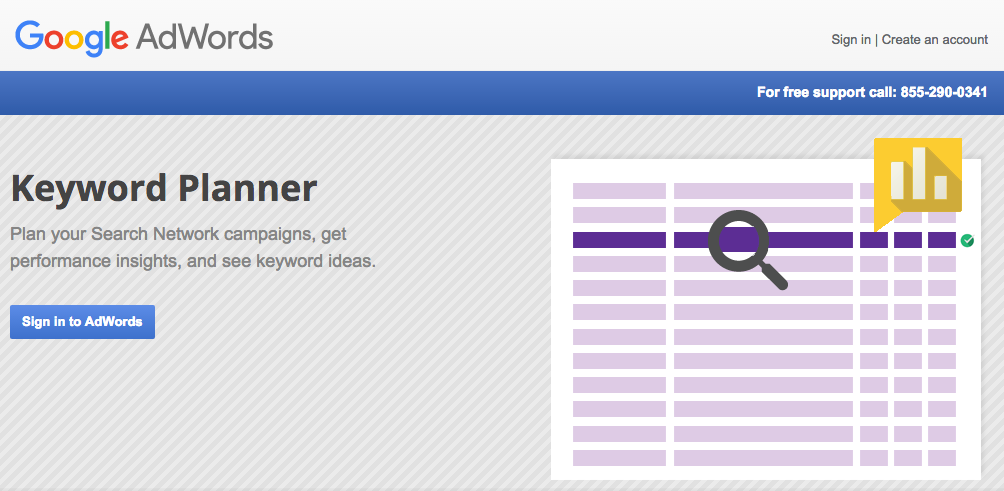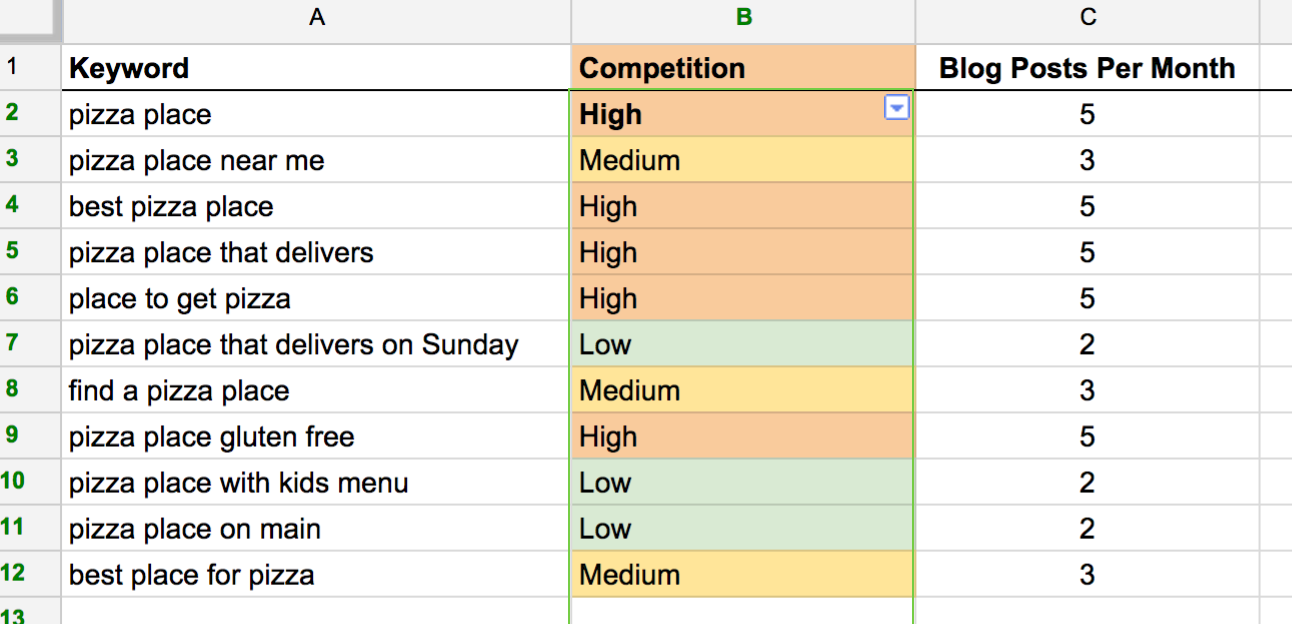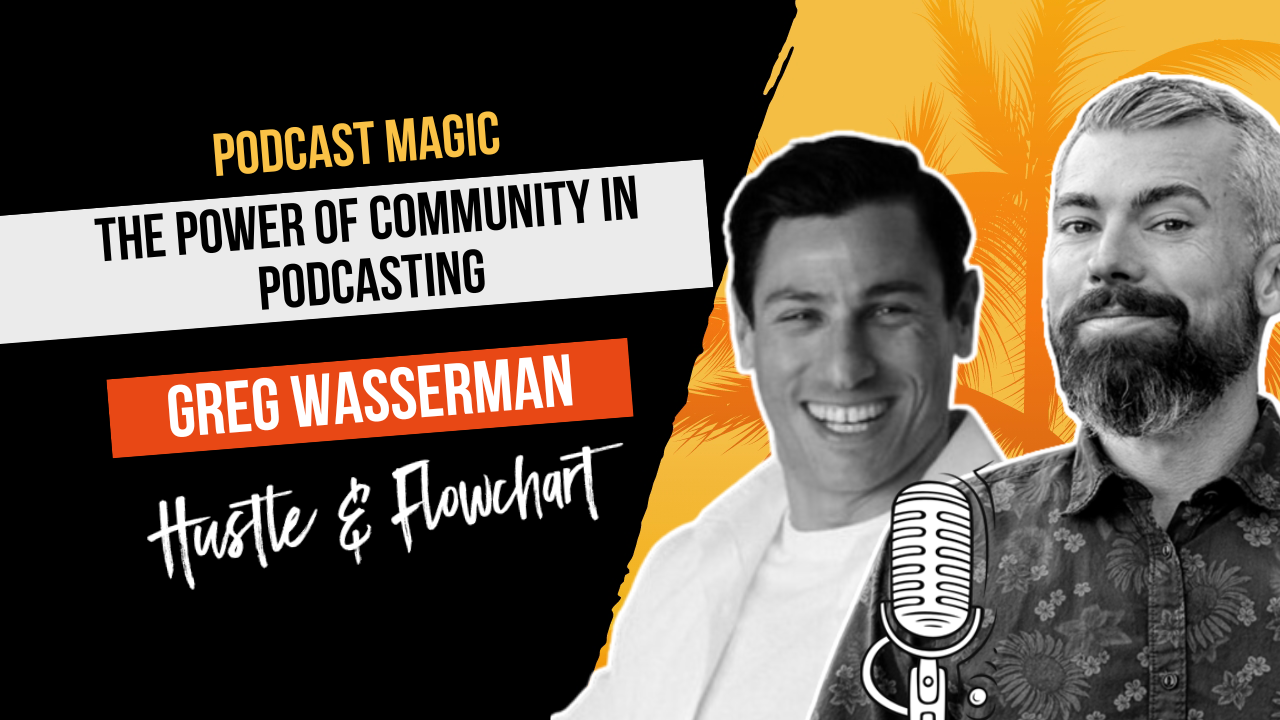Starting a blog is a lot like following a recipe. You take a few main ingredients, mix them together, turn up the heat, and share. Follow the steps correctly and you’ll end up with a masterpiece that captures everyone’s attention. If you cut corners or leave out important ingredients, the end result will go to waste. When starting your own blog, you may be tempted to rush through, or skip over certain steps to save on time or cost. In doing so, you’re actually doing more harm than good.
The following is a list of three critical ingredients in the recipe for blogging success:
Blog Ingredient #1: A Well-Researched Keyword Strategy
A healthy keyword strategy is the foundation of your blog. Without a data-driven keyword strategy, your blog is nothing more than a dumping ground for random topics. A well-executed keyword strategy begins with research. The audience for which your blog is intended will most likely discover your content through a search engine. Keyword research helps you identify topics of interest to this audience. Armed with this knowledge, you can prepare a keyword-rich content strategy which improves the likelihood of your content surfacing in a search query.
Understanding your audience:
- What kinds of questions are they asking?
- What are their pain points?
- Where do they currently go for information?
Once you have a thorough understanding of your target audience, you can begin the process of mapping keywords to your content. My favorite tool for keyword research is Google Keyword Planner (p.s. it’s free!). Simply login with your Google account, and search for known topics of value. Google Keyword Planner will return a list of related keywords as well as monthly search volume for each. You will notice that some keywords have high search volume while others have very little. It is tempting to only target keywords with high search volume, but you will find that the keywords with the greatest search volume are also the most competitive. The best practice is to select an assortment of keywords with varying degrees of competition.

Note from the editor: There is gold in, what we call, “long-tail keywords”… Long-tail keywords are the keywords you find that are a bit longer and have a little bit less search volume… However, these keywords are a lot easier to rank for than broad keywords and often have much more “intent” behind them… Meaning that your article is probably going to be exactly what they were looking for.
A hint for long-tail keywords is to think of how people would ask a question instead of thinking of a specific keyword they would look for… For example, “what is the best pizza place that delivers on Sunday” vs. “Sunday Pizza Delivery”… If you were to use something like Siri to do a search on Google, what would you ask… Be thinking in those terms to find killer long-tail keywords.
Blog Ingredient #2: Search Engine Optimized Content
Now that you have a healthy list of keywords and you’ve organized them by level of competition, you will find it much easier to produce a content calendar for your blog. This exercise will also help you set monthly blogging goals. For example, you might decide to post 5 blogs per month targeting your keywords with the highest competition and you might decide to only post 2 blogs per month targeting your lowest competition keywords.
In the hypothetical example above, a total of 40 blogs are needed each month. Here are some guidelines to follow:
- Each blog should be optimized for only one keyword or keyword phrase.
- Use the target keyword in the page title, the URL, the headline, and at least three times throughout the body copy.
- Include a meta description (fewer than 150 characters) that will appear beneath the page’s headline on search engine results pages (SERPs).
- Optimize images by changing the ALT text to include the target keyword.
More on page SEO advice can be found here.Blog Ingredient #3: Community Building
The success of your blog is strongly influenced by the rapport you build with other bloggers. Fellow bloggers are not necessarily your competition. In fact, they can be your allies. There are a couple of ways you can go about building a strong community immediately.
The first, and most obvious way, is by commenting on other blogs and asking the authors of those blogs to visit yours and do the same. This approach is generally very effective, but also quite time-consuming. Another way to encourage cross-promotion of your blog is by writing about and linking to others’ content within your blog, then tweeting the link directly to the author you mentioned in your article. He or she will likely share your content to his or her followers, putting brand new eyes on your blog – views you would not have earned otherwise. The process of community building does not happen overnight. Think of it like a personal branding exercise. As your digital footprint grows, the credibility of your blog will too.
Pro tip: sign up for a free Gravatar account so that every time you comment on a blog, your photo appears. Use the same profile photo for each of your social media accounts so you are easily recognizable across the web.
Tip from the editor: Find blogs that you really enjoy and would like to comment on often. Create a Google Alert for those blogs so that you get an email notification whenever that blog is update. When it comes to commenting on other people's blogs, being one of the first comments could help give a traffic boost. Keep notified and try to be one of the first comments on each blog you focus your outreach on.
Looking Ahead
Over time, as your blog earns authority and has a steady stream of traffic, it is OK to be more cavalier with spontaneous tweaks to your content calendar.
Ready to learn more about how to boost your blog’s readership? Check out this Practical Guide to On Page SEO.











